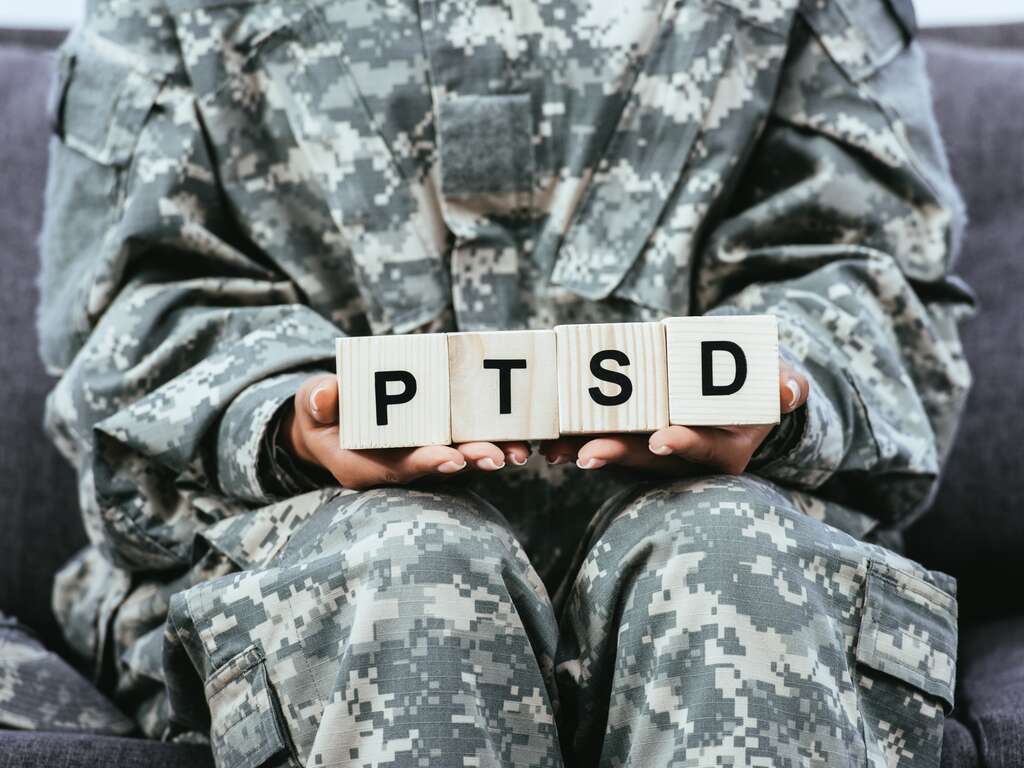Trauma Therapy
Ready to Take the Next Step?
We are Ready to Help, Call Now!
Turning Point of Tampa has helped thousands find recovery. As an in-network facility, we are able and committed to helping you find the life you deserve.
Trauma Therapy
The goal of trauma therapy at Turning Point of Tampa is to decrease the intensity of the feelings around traumatic experiences so that these feelings are less likely to contribute to patterns of relapse.
How does Trauma Therapy work?
Trauma therapy works by directly addressing the feelings around events or memories related to traumatic events. Patients are assisted in fully processing these emotions in order to lessen their pain and intensity. Different treatment options may be used to directly address these feelings, including written assignments, group sessions, or individual therapy work utilizing accelerated resolution therapy. It is important to remember that trauma symptoms do not directly cause substance use disorders or eating disorders, although they can contribute to patterns of chronic relapse. Connecting clients with techniques and mental health resources to address their trauma can help to break the cycle of relapse.

How do I know I’m ready to do this work?
A healthy foundation of recovery support and basic knowledge of coping skills helps individuals with trauma have the readiness to do the work necessary for trauma treatment. Turning Point of Tampa works to ensure a necessary foundation of coping and support is in place before trauma work begins. Trauma therapy must be recommended by the clinical treatment team and is based upon assessments of readiness and preparedness by board certified physicians. The form and capacity in which this work takes place, including whether in a group, individual session, or a combination of both, is personalized and dependent upon a client’s needs.
Trauma therapy can be very stressful, as it includes intensive talk therapy focused on the traumatic event (or events) that are causing distress. If a person’s current mental health is impacted by traumatic occurrences from many years ago, they may not be ready to discuss or relive these events in therapy. A trauma informed therapist recognizes the potential for harm when engaging a client for trauma therapy before they are adequately prepared and equipped with the necessary healthy coping skills for trauma processing. For this reason, the trauma therapist will depend on professional medical advice to determine when a client is ready to pursue trauma therapy.
What types of issues would I be working on in trauma focused therapy?

Trauma and trauma-related issues may include memories that cause emotional distress or past events that someone feels unable to “shake” or unable to move on from in their life. A traumatic event may take the form of a painful personal loss, an experience of sexual, emotional or physical abuse, exposure combat or violence, or any troubling event or memory that creates emotional disturbances. Trauma can come in many forms and does not necessarily follow any patterns or fit neatly into categories. It is important not to make any assumptions about trauma or the experience of having trauma. The following section describes clinical diagnoses for mental health conditions that can arise from trauma exposure, but even if you do not fit the criteria for these disorders, you may still benefit from trauma therapy.
What mental health conditions are caused by trauma?
The two diagnosable mental health conditions that are most directly linked with trauma have similar criteria. These trauma related disorders are distinguished from each other by the length of time that has passed since the event.
Acute Stress Disorder
If you have had a traumatic event occur in the past month that has resulted in emotional or psychological harm, you may be suffering from acute stress disorder (ASD) and might benefit from trauma specific treatment. People diagnosed with ASD must have been exposed to at least one trauma in the past month, including actual death or threats of death, serious injury, or sexual violation.
Types of Trauma exposure
Types of trauma exposure can include directly experiencing the event, meaning that you were the person that was threatened with death, injured, or violated sexually. But it can also include witnessing the event as it happened to someone else. Or you may have learned that the event happened to someone else who is close to you (a family member or close friend).
Finally, some people who develop ASD do not witness or directly experience the traumatic experience, or have it happen to someone they are close to, but are instead repeatedly exposed to extensive and aversive details of the traumatic event. This most often applies to people who deal with trauma professionally, like paramedics who see dead or grievously injured people, social workers who must document the details of child or elder abuse, or police officers who collect evidence from the scene of violent crimes.
Symptoms of ASD
In addition to trauma exposure, ASD is characterized by the presence of nine or more symptoms. The list of potential symptoms is extensive, but they are grouped into five categories.
Intrusion symptoms include recurrent and painful memories, nightmares, flashbacks, or intense distress in response to reminders of the event.
Mood symptoms are characterized by an inability to experience joy or happiness.
Dissociative symptoms include a feeling of reality being altered and a removed feeling in daily life, as well as an inability to recall details of the traumatic event.
Avoidance symptoms encompass unhealthy behavior patterns that trauma survivors display in an effort to avoid reminders of the trauma memory. They can be internal (trying not to think about the event) or external (staying away from people, places, or activities that echo elements of the event).
Arousal symptoms include difficulty sleeping, irritable behavior with no provocation, hyper-vigilance (being constantly on guard and looking out for danger), issues concentrating, and an exaggerated response to being surprised or startled.
Clinically Significant Distress
The final two criteria state that the symptoms must last between 3 days and 1 month after exposure, and that they must cause clinically significant distress or impairment in functioning.
Post Traumatic Stress Disorder
Post traumatic stress disorder is the second of the mental health disorders primarily associated with trauma. PTSD differs from ASD in the length of time it persists from the traumatic event, as it must occur more than a month after exposure. People with PTSD may have experienced multiple traumatic events, in what is known as chronic trauma, and these experiences may overlap and influence each other in what is known as complex trauma. The types of trauma exposure described above for ASD are shared with PTSD.

Symptoms of PTSD
PTSD also differs from ASD in that it requires a person to experience at least one symptom from the intrusive symptoms listed above.
People with PTSD also must have one or both of the avoidant symptoms, meaning they must be making a mental effort to avoid thinking of the traumatic memory, avoiding external reminders of the traumatic event, or both.
Patients with posttraumatic stress disorder also display at least two cognitive or mood symptoms, at least a month after their psychological trauma. These include an inability to recall important details of the traumatic event, which you may recognize from the ASD criteria.
The cognitive and mood symptoms for PTSD can also include diminished interest in important things, feelings of detachment from others, persistent inability to feel happy or joyful, persistent state of negative emotions like fear or guilt, negative beliefs about themselves or the world around them, and distorted cognitions that lead them to blame themselves or others for the trauma. These distorted cognitions are one reason that cognitive processing therapy is effective as a treatment for PTSD.
Finally, people with PTSD also experience two or more symptoms of altered arousal and reactivity, including sleep issues, irritable behavior, problems concentrating, hyper-vigilance, an exaggerated response to being startled, and self-destructive behavior (a symptom not shared with ASD).
Duration and clinical disturbance of ptsd symptoms
To be diagnosed with PTSD, a person must experience the above combination of symptoms for more than 1 month. As with ASD, the mental health symptoms must cause clinically significant distress or impairment in functioning, and not be caused by a mind-altering substance or a medical condition.
What if I don't fit the criteria?
Not everyone who has endured trauma develops ASD or PTSD, and not everyone who struggles with trauma from their past fits the diagnostic criteria for ASD or PTSD, but if you recognize some of these symptoms, you may still be able to reap the benefits of trauma therapy. If you are struggling with substance abuse or an eating disorder and have relapsed repeatedly, that may be an indicator that you need trauma focused treatments of the type used at Turning Point of Tampa.
What modalities are used when dealing with someone with trauma issues?
Turning Point of Tampa focuses on emotional support and coping to give clients the tools they need to move on from their trauma and overcome their issues with substance use disorders or eating disorders. They employ multiple modalities that are utilized in approaching issues of trauma.
Specific types of trauma therapy that are used include accelerated resolution therapy (ART), narrative therapy, experiential therapy, psychodrama, gestalt techniques, dialectical behavior therapy, and cognitive-behavioral therapy.
Accelerated Resolution Therapy
Accelerated resolution therapy is a type of trauma informed therapy that uses rapid eye movement desensitization and reprocessing techniques as a way of treating trauma and its symptoms. It builds on eye movement desensitization and reprocessing therapy (EMDR), but differs in that it can be effective after only three to four sessions.
The eye movements used in this modality are a form of bilateral stimulation, meaning that they work via a stimulus that acts on both sides of the body. The eye movement desensitization activities that patients are asked to do activate both hemispheres of the brain to reprocess traumatic events and allow them to be encoded in memory in a less harmful form.
Trauma therapists instruct trauma survivors to imagine new, peaceful images as they follow the stimulus with their eyes, reconsolidating the memory of the traumatic event or traumatic events so that they no longer cause distress. The trauma therapist thus assists the patient in viewing their trauma differently. Medical reviewers confirm that ART is an evidence-based way to treat PTSD without the long-term commitment required for prolonged exposure therapy or other modalities.
Narrative Therapy
Narrative therapy techniques use the power of storytelling to help people abandon trauma related beliefs and move past traumatic experiences in a healthy way. Narrative types of trauma therapy are empowering for the patient because they have the power to reshape their own story.
In narrative therapy, the mental health professional allows the patient to tell their version of the traumatic event or traumatic events. They then guide the patient through the process of reconstructing the event or events in a more adaptive form.
If a trauma survivor recounts the story of his or her sexual assault or childhood trauma in a way that blames themself, then the therapist would help them to re-tell the story in a way that externalizes the problem. In this way, a person who has experienced trauma can find a way to modify unhelpful beliefs related to their trauma and advance in the healing process.
Experiential Therapy
Experiential therapy uses expressive activities to let people re-process their trauma related memories in a healthy way. This type of trauma therapy can include everything from animal-assisted therapy, to play therapy, to art and music therapy. Mental health professionals treat patients by guiding them through experiences and encouraging them to explore the resulting feelings.
In experiential therapy, a trauma therapist might guide a person through recalling their traumatic experiences while they are comforted by a dog or cat. Or they might encourage a client to create a piece of art that depicts their traumatic experience. Experiential trauma therapy can take many forms, but all of them incorporate expressive activities outside the norm of talk therapy to broaden their efficacy.
Psychodrama
Psychodrama is an experiential therapy technique in which clients engage in dramatization and role-playing to build their coping skills and overcome their trauma related symptoms.
In trauma focused psychodrama, people with hereditary trauma may be given the chance to role-play a traumatic experience from their relative’s past, with mental health clinicians assisting them to ensure that the enactment addresses their personal mental health issues. These trauma therapies are widely practiced and have shown promise for addressing issues that are other forms of trauma therapy do not. The latest evidence based research on the effectiveness of treating trauma with psychodrama is promising, as the journal Frontiers in Psychology observed clinically significant reductions in symptoms of PTSD in a 2020 study.
Gestalt Techniques

Gestalt therapy helps patients to focus on the present. The benefits of trauma therapy using gestalt techniques allow people to exist in the present moment and stop focusing on the past. Gestalt techniques include the empty chair technique, in which the person addresses an empty chair as though they were speaking to someone they have been unable to address in real life, enabling them to open up about feelings they have been suppressing. Another gestalt technique is known as “here and now,” in which clients identify how their present thoughts and behaviors are influenced by the past. These treatment options can be very effective for sufferers of PTSD, since they often struggle to leave behind painful memories.
Dialectical Behavior Therapy
Dialectical behavior therapy (DBT) is a trauma focused therapy that was developed for people with intense emotions. It was originally developed to treat the mental illness known as borderline personality disorder (BPD) but has shown promise for treating PTSD as well. DBT balances the therapeutic goals of change and acceptance, helping patients deal with feelings of self-loathing while also assisting them in changing problematic behaviors. Trauma therapy using the DBT model is effective for many people living with ASD or PTSD because it addresses the mood and cognitive symptoms they experience, giving them practical coping skills and thought exercises that they can use when their emotions become overwhelming.
Cognitive Behavioral Therapy
DBT is actually a modified formulation of cognitive behavioral therapy, a broader modality that helps people become aware of their negative thought patterns and work to change them. Trauma focused cognitive behavioral therapy is a specific modality within the field that is designed to address the long-term effects of early trauma. Mental health professionals help clients identify negative and self-blaming thoughts they have been having, and help them counteract them with more positive patterns of thought.
What do past patients have to say about trauma informed care?
“I always felt supported and encouraged, even though the trauma work was challenging. I had a space that was safe in which I could fully share what I was feeling. Like I said, it wasn’t easy, but the gift of living a life without fear helped to save my recovery and allowed me to trust people again. I couldn’t imagine keeping my recovery if I had never learned how to trust!”
“I was hurting when I entered into the trauma group. I had lost all trust in my higher power and people. I experienced the trauma group to be a safe environment to shed my pain and heal from my traumas. I learned to trust again and renew my relationship with my higher power. I felt resurrected as trauma group came to completion.”
Veterans Addiction Assistance
Treatment for Veterans & Active Duty Service Members

Preferred Provider of The Community Care Network

